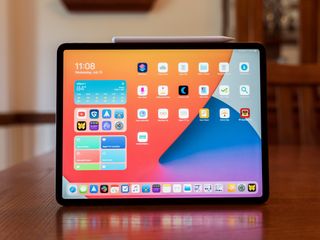iPadOS 14: Everything you need to know

Apple has launched a new version of iPadOS, its first major revision since Apple split it from iOS at WWDC 2019. The update contains several new features and performance improvements, and launched alongside Apple's updates for iPhone, Apple Watch, and Apple TV.
Here's what you should know about iPadOS 14.
What are the big headlines of iPadOS 14?
iPadOS 14 is the latest version of Apple's iPad software, and the second major version to hold the iPadOS name. The focus is not primarily on new features, though there are a few, but rather on the refinement of the iPad experience. The features include the new widgets, updated app designs, improved search, and, perhaps Apple's most impressive software feature this year, Scribble, which can convert handwriting into typed text.
Are there updates to the Home screen?
The only new elements of the Home screen is the new style of widget in the widget sidebar. You don't seem to be able to add widgets to the rest of the Home screen, and features like App Library remain iOS-exclusive.
What about the rest of the interface?
Apple has added a new sidebar to many of its first-party apps, including Photos and Music, as well as an updated one in apps like Notes and Files.
Siri is now more compact, much like the UI on iOS 14. Speaking of compact, phone calls now drop down from the top of the screen like a notification, rather than taking over your whole screen.
So sidebars? Like a Mac?
Kind of. The sidebar in iPadOS apps is a new feature in apps like Photos and Music, and does more than just show menu items. In Music, for instance, the sidebar can display playback controls and song lyrics. On photos, you have easy access to all of your albums, people, recent photos, and more.
Master your iPhone in minutes
iMore offers spot-on advice and guidance from our team of experts, with decades of Apple device experience to lean on. Learn more with iMore!
What's up with search?
Apple has revamped search on the iPad. The new search bar appears on top of the screen, rather than taking over your whole screen. You can launch apps, open websites, search the web, and more. Search also populates results more rapidly than previous iterations.
So you can write with the Apple Pencil, then it will turn into text in an app?
Yes. This is functionality that's been available in select third-party apps for a while, but it is now a native part of iPadOS. Apple calls it Scribble. Think of it as typing with your handwriting. Apps will need to be updated to support it, but in any app that does, you can write as you normally would with the Apple Pencil, then copy your handwriting as text, then paste it.
At launch, Scribble recognizes English and Mandarin.
Are there any other Pencil updates?
The features of Scribble, and Apple's updated handwriting recognition in general, also play into another feature: treating handwriting as an equal of typed text. In the Notes app (and third-party apps who take advantage of this functionality in the SDK), you can write with the Apple Pencil by hand, and Notes will recognize what you've written. You can highlight it, copy it, and even paste it as typed text in another app if you want.
What's more, handwriting recognition also supports data detectors. So when you write out a piece of information like a phone number, website, or physical address, iPadOS will now highlight it just as it would if the text were typed. You can then tap the highlighted handwriting to call that number, visit that website, or see that address in maps.
Will iPadOS 14 run on my iPad?
If your iPad can currently run iPadOS 13, then iPadOS 14 will be available for that device, too. Officially, iPadOS 14 will run on the following devices: iPad Air 2 and later, all iPad Pro models, iPad 5th generation and later, and iPad mini 4 and later.
Is there a beta for iPadOS 14?
While the beta for iPadOS 14.0 has ended with the release of the software ot the general public, Apple is currently testing updates to the system for release down the line.
When will iPadOS 14 be available?
iPadOS 14 is available now to anyone with a compatible iPad.
Joseph Keller is the former Editor in Chief of iMore. An Apple user for almost 20 years, he spends his time learning the ins and outs of iOS and macOS, always finding ways of getting the most out of his iPhone, iPad, Apple Watch, and Mac.
Most Popular




